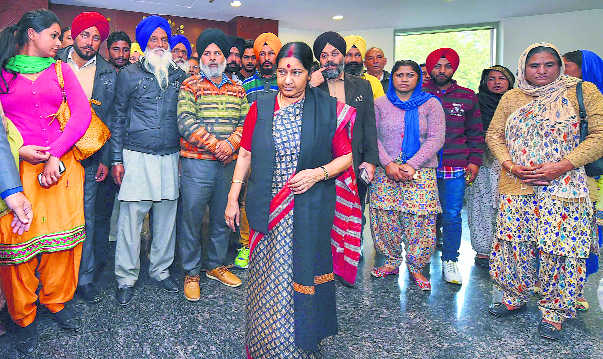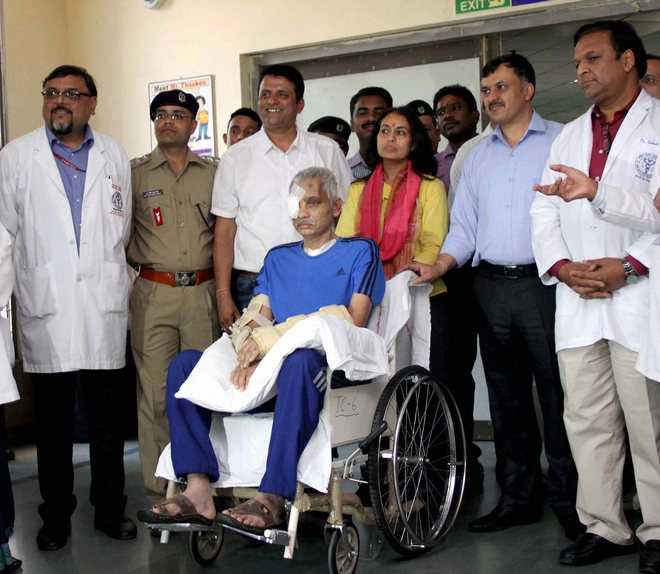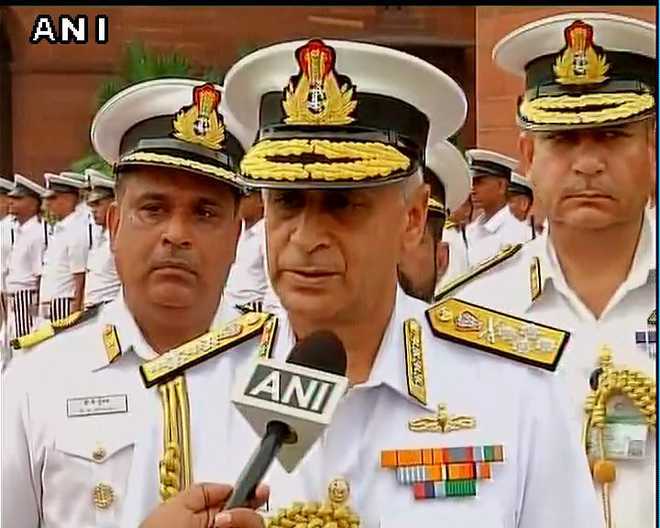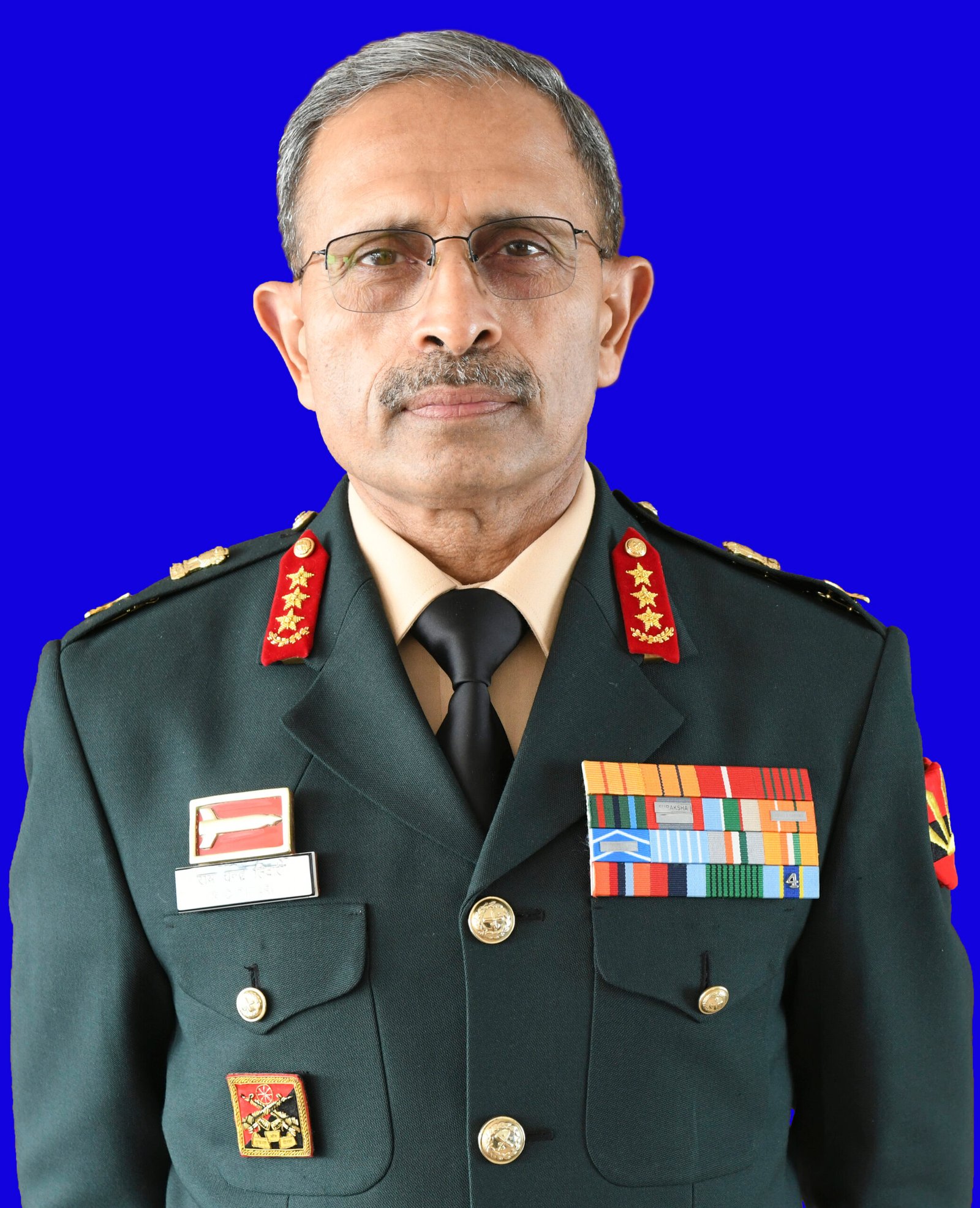
Current Events :











Ludhiana, April 3
An Army jawan has alleged that his motorcycle was forcibly taken away by men in police uniform from his house at Kehar Singh Nagar on the Jassian road. Lance Nayak Sunny Pathania, posted with 30th Battalion of Punjab Regiment in Binnaguri, West Bengal, is running from pillar to post to find out which police station had impounded his bike.Pathania said his brother Manish Pathania was named in a robbery case and recently, a fresh case of decoity was also registered against him at the Salem Tabri police station. Alleging that the police had taken his bike, Splendor Pro (PB10DD 5053), from his house without telling anything to his elderly mother.“On March 22, several personnel, reportedly of the Ludhiana police, came to his house and forcibly took his locked motorcycle. When my mother and local residents asked about the reason for it, the policemen said nothing. If my brother is facing any FIR, why the motorcycle registered in my name was taken away by thet police. Now, my elderly mother is running from one police station to another to find the bike. Police stations are denying being in possession of my bike,” Sunny told The Tribune.The Army jawan said he and his mother were not in touch with his brother wanted by the police, still the police were harassing his mother, who had serious health issues.“A few days ago, my mother was informed by some city policemen that the bike was impounded by the Kotwali police. When she reached there, the policemen asked her to go to PS 4. When my mother went to PS 4, the personnel there, too, denied impounding any such bike,”The jawan later approached his Major, Coy Commander JK Aggarwal, 30th Battalion, Punjab Regiment, Binnaguri, West Bengal, who sent a letter to the Deputy Commissioner, Ludhiana; the Zila Sainik Welfare Office, the SDM and the Police Department. The Major writes: “I have received an application from Lance Nayak Sunny Pathania serving with the Punjab Regiment. It is requested the matter may please be investigated thoroughly to be resolved at the earliest since the individual is currently under stress and is unable to perform his duties with peace of mind. Action taken report on the subject may please be intimated to this unit”. Meanwhile, PS 4 SHO Rajwant Singh said no one from his police station took away any bike from the Army jawan’s house. Kotwali SHO Birbal said no such bike was impounded by the police in the recent past.

An IAF MI-17 V5 helicopter crashed near Kedarnath shrine in Uttarakhand on Tuesday morning. All those on board the helicopter, including the pilot and the co-pilot, were safe. The helicopter was carrying heavy construction equipment from Guptkashi to Kedarnath when the accident occurred.“The incident occurred around 8.10 am. The helicopter crashed 60 metres from the helipad. Only the IAF can ascertain the exact cause,” said the Rudraprayag DM. The state government had requisitioned MI-17 V5 as the Irrigation Department needed heavy machinery for reconstruction work. PTI
Tribune News Service
Solan,March 30
Veer naris and widows of ex-servicemen from across the state on Friday participated in a mega ex-servicemen rally organised by the Pine Division under the aegis of Vajra Corps at the local military station here.The General Officer Commanding (GOC), Pine Division, was also present.Addressing a gathering, officials assured them of making all efforts to resolve their grievances. The rally aimed at resolving service and civil administration-related grievances of these people through several counters.A medical camp was also organised by the Army as part of “The Year of War Disabled”. Soldiers with disabilities were also honoured.Three modified auto scooters, two wheelchairs and various grants were distributed. As many as 34 Veer naris and 94 widows were felicitated.
Ajay Banerjee
Tribune News Service
New Delhi, April 1Faced with problem of terrorists targeting military bases, the Defence Research and Development Organisation (DRDO) is now testing out an unmanned tech-based solution to provide security for the perimeter of such military stations.In the past few years, there have been almost a dozen attacks or attempts by terrorists to storm a military base to pick on easy targets like women and children living in the Army quarters.The DRDO is carrying out an experiment at a 4,000-acre military area in southern part of India. It has a mix of laser walls, radars, physical vibration sensors. The input is then aggregated. “Let us prove it, we will pass on this technology to the industry,” DRDO Chairman Dr S Christopher told The Tribune.Notably, the DRDO has demonstrated an unmanned ground vehicle (UGV) that can be sent to the spot to set aside any suspicion detected by the technology at the perimeter. “The UGV will have a light and camera, it can send across a live picture. But it will not have a weapon,” the DRDO chief said.Talking about radars, Dr Christopher said “We have told the Defence Minister that by 2022 the country will not need to import any type of radars.”We will look at Bharat Electronics Ltd (BEL) and also private companies. “There are good companies, who are making radars,” he said. So far DRDO has not given full-fledged radars technology to any private company. The joint work has been done between DRDO and private companies. The BEL-produced radars are a success and installed at various locations.The DRDO, he said, was working on projects as varied as submarines to satellites. Negotiations have been completed for the six Airbus- 330 planes which will be fitted with radars and surveillance equipment. At present, India uses the Boeing P8-I for looking over the sea while the Russian IL-76 has been modified or a role with the IAF.
A model of the Tiangong-1 space lab module (L), the Shenzhou-9 manned spacecraft (R), and three Chinese astronauts is displayed during a news conference at Jiuquan Satellite Launch Center, in Gansu province, China on June 15, 2012. Reuters
Shanghai, April 2
China’s defunct uncontrolled Tiangong-1 space station re-entered the Earth’s atmosphere and burnt up over the middle of the South Pacific on Monday, the Chinese space authority said.
The “vast majority” of the craft burnt up on re-entry, at around 8:15 a.m. (0015 GMT), the authority said in a brief statement on its website, without saying exactly where the remnants might have landed.
Earlier, it had said the craft was expected to re-enter the atmosphere off the Brazilian coast in the South Atlantic near the cities of Sao Paulo and Rio de Janeiro.
The United States Air Force 18th Space Control Squadron, which tracks and detects all artificial objects in Earth’s orbit, said it had also tracked the Tiangong-1 in its re-entry over the South Pacific.
It said in a statement it had confirmed re-entry in coordination with counterparts in Australia, Canada, France, Germany, Italy, Japan, South Korea and Britain.
The remnants of Tiangong-1 appeared to have landed about 100 km (62 miles) northwest of Tahiti, said Brad Tucker, an astrophysicist at Australian National University.
“Small bits definitely will have made it to the surface,” he told Reuters, adding that while about 90 percent would have burnt up in the atmosphere and just 10 percent made it to the ground, that fraction still amounted to 700 kg (1,543 lb) to 800 kg (1,764 lb).
“Most likely the debris is in the ocean, and even if people stumbled over it, it would just look like rubbish in the ocean and be spread over a huge area of thousands of square kilometres.”
Beijing said on Friday it was unlikely any large pieces would reach the ground.
The 10.4-metre-long (34.1-foot) Tiangong-1, or “Heavenly Palace 1”, was launched in 2011 to carry out docking and orbit experiments as part of China’s ambitious space programme, which aims to place a permanent station in orbit by 2023.
It was originally planned to be decommissioned in 2013 but its mission was repeatedly extended.
China had said re-entry would happen in late 2017, but that process was delayed, leading some experts to suggest the space laboratory was out of control.
Worldwide media hype about the re-entry reflected overseas “envy” of China’s space industry, the Chinese tabloid Global Times said on Monday.
“It’s normal for spacecraft to re-enter the atmosphere, yet Tiangong-1 received so much attention, partly because some Western countries are trying to hype and sling mud at China’s fast-growing aerospace industry,” it said. Reuters

KC Singh
Human life has transient value in huge nations like India as news gets swept away by new and juicier distractions. The death of 39 missing Indians, mostly from Punjab, raises questions about Indian power and effectiveness in rescuing its citizens caught in civil strife abroad. India has had successes in the past, but the Mosul tragedy needs investigation. Great powers fight for every citizen’s life and security. The US has been known to even negotiate despite stated policy of non-negotiation with abductors. Even Israel, with a similar stance, has compromised for the release of captured soldiers. The Mosul tragedy resulted from the sudden collapse of Iraqi forces in northern and western Iraq as the IS captured many cities, including Mosul, the second largest Iraqi city. It was known that the Shia-led Iraqi regime had been alienating Sunnis and letting this sectarian approach degrade the US trained Iraqi military and its command and control structure. President Barack Obama, unwilling to re-enter the Iraqi morass, watched from the sidelines as the security conditions deteriorated. But even the US could not anticipate its suddenness or extent. The geographical reason for this is that Iraqi cities are on the two great rivers of Tigris and Euphrates. The former runs south from the Turkish border and on it lies major northern cities like Mosul and Tikrit, the hometown of Saddam Hussein. It flows through the Turcoman and Sunni parts of Iraqi population. The Euphrates comes from the west, from Syria. To the west of Mosul is sparsely populated land providing little density to resist a quick assault like that of the IS. Undoubtedly, the local Sunni population initially welcomed rather than resisted the IS ingress. Should India have foreseen this and urged its workers to move south or blocked them well before the tragedy unfolded in the region? In hindsight, the answer is in the affirmative, but in real time, it is impossible to monitor the flow of workers, who may initially go to one Gulf nation and then move where jobs beckon. It is also difficult to dissuade persons whose families have borrowed huge sums to send them abroad, chasing dreams of prosperity, to abandon jobs, particularly when their employers flee and wages remain unpaid. The Ministry of External Affairs needs to rejig its strategy and have its political divisions coordinate better with those monitoring consular issues to anticipate flashpoints well before crises. This century has seen more intra-state conflict than regular wars. Mosul abductions occurred in June 2014. Interestingly, 46 nurses, who were in Tikrit, south of Mosul, were caught in the same upsurge. It is unclear how they were extracted, but not the 39 held in Mosul. The argument that they were detained by a group to which Iraqis or Indians had access does not square with the route adopted for their release. They were taken north to Mosul for handing over near Kurdish-controlled Erbil, thus transiting the IS-controlled territory. Similarly, Turkish diplomats and truck drivers were released by Turks. Even Bangladeshi workers were released once their religion was known. Did ransom and influential Malayali Gulf contacts play a role in the release of nurses? Contrariwise, did the Akali-BJP government keep dilly-dallying while Delhi approached West Asian and Gulf capitals for help, rather than devising a direct strategy? The cold-blooded killing of 39 Indians — the 40th Masih having escaped and returned to India — needs thorough investigation to ensure no Indian Government ever dissimulates to conceal its helplessness. Knowing that the IS was ruthless in eliminating non-Muslims in its custody, particularly if they were not Christians, time was of the essence. Each day passed was a day too many to rescue the abductees. Some self-congratulatory stories appeared about the nurses getting released due to the efforts of an adviser in PM Narendra Modi’s office using his intelligence assets in West Asia. It seems those assets had less interest in poor workers from Punjab. The only players with some leverage with the IS at that stage were Turkey, Qatar and, to a lesser extent, Saudi Arabia and the UAE. Turkey was first going to get its own diplomats and citizens released before running errands for others, particularly India with which it had functional, but not outstanding relations. India must have asked the others. But the primary responsibility would have fallen on the Indian mission in Iraq as it needed to invoke relationships it should have built outside the Baghdad bureaucracy with non-Shia sources in northern Iraq. Some senior military advisers with the IS were former Saddam military brass. Did India bother to revive links to them or rested on its oars in Baghdad? That is the kind of parallel intelligence network that all nations maintain. Excessive dependence on the US or its surrogates in Baghdad, or other capitals, leads to the very geostrategic swamp where Obama and the Gulf nations found themselves once the Islamic caliphate was announced by Baghdadi in Mosul. The Modi government having failed to get any link to the IS that was reliable set about selling the “they are alive” story. Masih the escapee was dubbed unreliable and as it turns out now, when the bodies of the unfortunate have been found and identified, was speaking truth all along. External Affairs Minister Sushma Swaraj altered the message as Mosul’s liberation approached and there was still no sign of the boys. “It is a sin,” she proclaimed to declare someone dead without proof. What do we call raising hopes of families unrealistically to only dash them after four years of assurances? A modified story was floated post-Mosul liberation that abductees are probably in Badush prison. An Indian television channel, within hours, showed the prison reduced to dust. The US, with its eyes in the skies and electronic intel, should have been able to provide answers about the missing Indians long before Mosul was reduced to rubble. These questions need answering and unless lessons are learnt, the deaths of these poor souls would have been in vain. At the very least, the government should compensate the families for their pain and material loss. The writer is a former Secretary, Ministry of External Affairs
Ajay Banerjee
Tribune News Service
New Delhi, March 23
The Ministry of Defence (MoD) has proposed a major tweak to the defence-manufacturing policy, including higher Foreign Direct Investment (FDI) limits, a multi-billion dollar target for domestic production of military equipment by 2025, self-reliance and exports of critical technology.The Department of Defence Production under the MoD has put out a draft of the defence production policy (DPP-2018). It has sought suggestions by March 30. The final policy will be released after that.The new DPP draft says “the policy aims to achieve a turnover of Rs 1,70,000 crore ($26 billion approx) in defence goods and services by 2025. It may be noted that the domestic production for 2016-17 was Rs 55, 894 crore, largely in the public sector.The ministry says this will need an additional investment of around Rs 70,000 crore and aims to “achieve export of Rs 35,000 crore by 2025. The DDP identifies 13 sectors in which self-reliance needs to be achieved latest by 2025.On the list are fighter aircraft, medium lift and utility helicopters, warships, land combat vehicles, autonomous weapon systems, missile systems, gun systems, small arms, ammunition and explosives, surveillance systems, electronic warfare systems, communication systems and night fighting enablers.Off these, India is already producing Tejas jets, Dhruv helicopters, missiles and has had success in gun systems. The target will be achieved by faster absorption of technology, suggest the DPP.It says the FDI regime in defence will be further liberalised and “FDI up to 74 per cent will be allowed in niche technology areas under the automatic route”. Cyber space has opened the fourth domain of warfare, beyond Army, Navy and Air force. India, with its leadership in the IT domain, needs to use this technology to its advantage, suggests the DPP.

Tribune News Service
Jammu, March 20
Central Reserve Police Force commandant Chetan Kumar Cheetah, who won the battle against death and survived after receiving nine bullets, is again ready to defend the nation and face the challenges on the ground. He resumed duty at the CRPF Headquarters in New Delhi last week.On February 14, 2017, during an anti-insurgency operation in the Hajin area of Bandipora in north Kashmir, Cheetah had received nine bullets on his body and was critically injured. He had to undergo multiple surgeries and it was miraculous that he survived the bullet injuries.“I want youth to give their 100 per cent to the country — that is what I have done. The duty which I had… I could have escaped, but I faced the bullets,” Chetan Cheetah said in New Delhi.The braveheart’s survival is becoming a motivational story for the security forces personnel, especially those working in Jammu and Kashmir. “Chetan Cheetah’s story and bravery, especially his fight against all odds and resuming duty within a year of the incident, are an inspiration for the entire force. It was his internal strength which enabled him to get back in action,” said Ashish Kumar Jha, Public Relations Officer, CRPF, Jammu.Cheetah is still undergoing physiotherapy to improve sensation in his hand. For his bravery, Cheetah received Kirti Chakra, the second highest peacetime gallantry award.Once the brave commandant is fully fit, the CRPF is planning to bring him back to Jammu and Kashmir and use his experience in the militancy-torn state. “Chetan Cheetah is already a motivational force for all. We want to bring him back to the state and motivate the youth to join the force,” Jha said

Navy Chief Admiral Sunil Lanba will hold discussions with senior US officials. ANI file
New Delhi, March 18
Navy Chief Admiral Sunil Lanba will begin a five-day visit to the US frojm Mondaytomorrow during which he will hold extensive talks with the top military brass of the Trump administration to consolidate bilateral naval cooperation, including in the Indo-Pacific region.
Admiral Lanba will hold discussions with Defence Secretary James Mattis, Secretary of the US Navy Richard V Spencer, Chairman of Joint Chiefs of Staff General Joseph F Dunford Jr, Chief of Naval Operations Admiral John M Richardson and Commander of Pacific Command Admiral Harry Harris, a senior Navy official said.
The Navy Chief will also meet Commander of Pacific Fleet Admiral Scott Swift and Commander of Naval Sea Systems Command Vice Admiral Thomas J Moore.
“The visit aims to consolidate cooperation between the Armed Forces of both India and USA and also to explore new avenues of defence cooperation,” the defence ministry said.
Sources said China’s growing military presence in South China Sea and its rising assertiveness in that region may figure in the talks that Admiral Lanba will have with top US military officials.
The US has been pushing for a broader role for India in the strategically important Indo-Pacific region.
In November last year, India, the US, Australia and Japan gave shape to the long-pending “Quad” to develop a new strategy to keep the critical sea routes in the Indo-Pacific free from Chinese influence.
India, the US and several other nations have been calling for freedom of navigation in the disputed South China Sea. The US has been periodically sending naval ships and planes to assert freedom of navigation to the critical sea lanes, much to the chagrin of China.
In addition to holding bilateral discussions, Admiral Lanba will also visit the Pacific Command Headquarters at Pearl Harbour, Hawaii, the Naval Surface Warfare Centre (NSWC) in Dahlgren, the Pentagon and Arlington National Cemetery in Washington DC.
The defence and security ties between India and the US have been on an upswing in the last few years as both the countries have concluded a number of major agreements to further bolster strategic ties.
The pacts include the Defence Framework Agreement, signed in 2015, which lays a blueprint for collaboration between the defence establishments of both countries, and the Logistics Exchange Memorandum of Agreement (LEMOA) signed in 2016. The LEMOA provides for facilitating reciprocal logistics support between the armed forces of the two countries.
In addition, India was accorded Major Defence Partner status by the US in 2016, bringing New Delhi on par with Washington’s closest allies for defence-related trade and technology transfer.
The Indian Navy cooperates with the US Navy on several fronts which include operational interactions such as the Malabar naval exercise and exchange of white shipping information. Warships from both navies have also been regularly visiting each other’s ports. PTI

























































